
“As he went out of the Temple, one of his disciples said unto him, Master, see what manner of stones and what buildings are here! And Jesus answering said unto him, seest thou these great buildings? There shall not be left one stone upon another, that shall not be thrown down.” —Mark 13:1,2
The Birth of Roman Emperor Titus,
December 30, AD 39

An unknown artist’s depiction of what is thought to be historian Titus Flavius Josephus (AD 37 - c. AD 100)
|
 he lives of the Roman Emperors have always been of interest to historians of Western Civilization. They remain a cornerstone in classical education and of certain interest to Christians in the study of Church history, especially as it relates to the martyrs. Although not mentioned by name in the Bible, Titus should be accorded a special place in history for fulfilling many biblical prophecies which came to fruition in the capture and destruction of Jerusalem in AD 70. He rode his military conquest to succession of his father as the Roman Caesar. The record of his triumphs figures prominently in the great historical work by one of his generals and close advisor, the Jewish-born Titus Flavius Josephus. he lives of the Roman Emperors have always been of interest to historians of Western Civilization. They remain a cornerstone in classical education and of certain interest to Christians in the study of Church history, especially as it relates to the martyrs. Although not mentioned by name in the Bible, Titus should be accorded a special place in history for fulfilling many biblical prophecies which came to fruition in the capture and destruction of Jerusalem in AD 70. He rode his military conquest to succession of his father as the Roman Caesar. The record of his triumphs figures prominently in the great historical work by one of his generals and close advisor, the Jewish-born Titus Flavius Josephus.
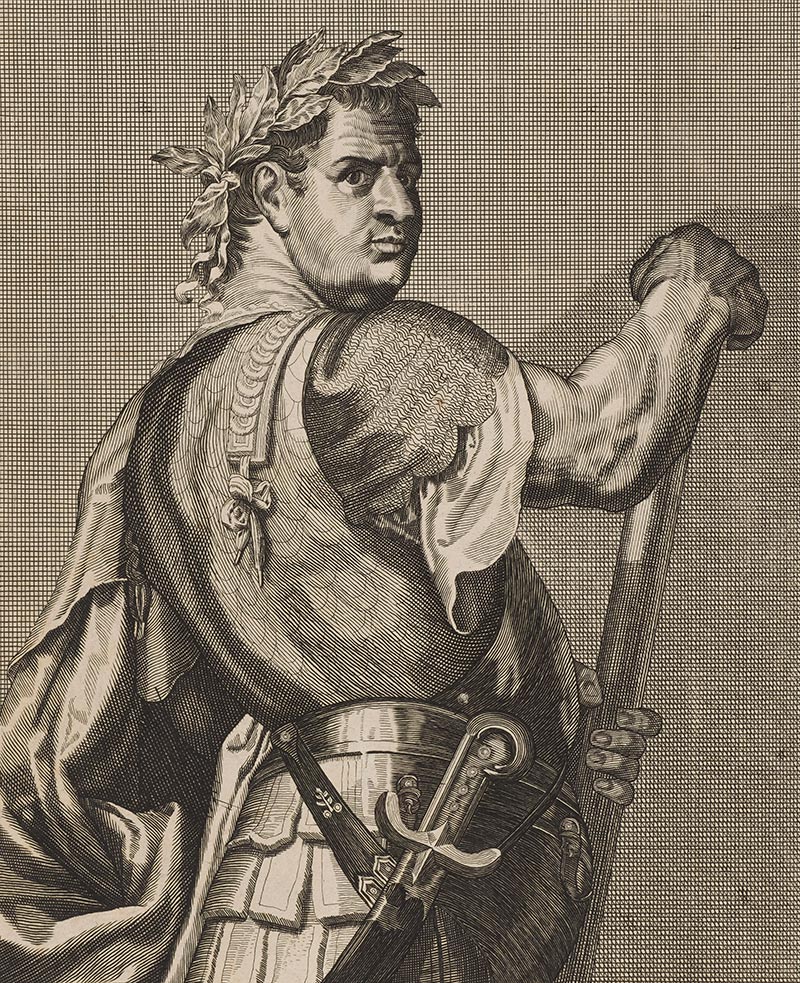 Titus Flavius Caesar Vespasianus Augustus (AD 39-81) Titus Flavius Caesar Vespasianus Augustus (AD 39-81)
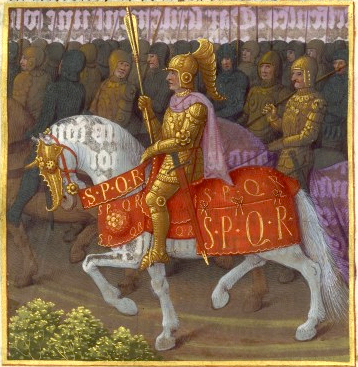
Emperor Vespasian (AD 9-79), father of Titus
|
Titus was born to an upper class family. His grandfather had married strategically for wealth and position, eventually rising to the patrician class. His son, Vespasian became a consul in AD 51, when his son Titus was just eleven. The family barely managed to dodge being caught up in the intrigues and assassinations that accompanied the ambitious rulers of Rome.
In AD 66, a Jewish rebellion in the Middle East broke out over a number of issues, from taxes to profaning the Temple. Vespasian was dispatched by Nero to Judea to quell the “Great Revolt.” The Jews had been troublesome from the beginning of Roman rule and the empire had to keep two legions in the area on a regular basis. The Roman XII Legion was virtually destroyed by the Jewish rebels and more than 6,000 massacred. Romans always responded in kind and to greater measure. The V, X, and XV Legions—the first two led by Vespasian and the third by his son Titus, a total of 60,000 men—laid siege to Jerusalem after a bitter two-year campaign across the region.
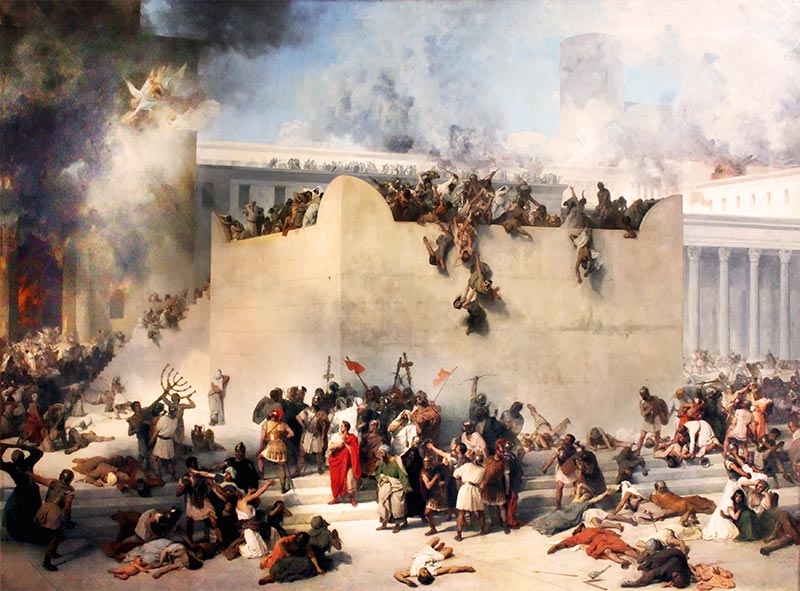 The destruction of the Temple in Jerusalem The destruction of the Temple in Jerusalem
Jerusalem was no ordinary citadel. It had served as the religious center and political capital of the nation of Israel for centuries. Seventeen times it has been sacked or destroyed, the most terrible being the overthrow of the “City of David” by General Titus in AD 70. Josephus left a detailed record of its apparently impregnable heights and walls situated on four major hills, the highest being Mount Moriah on which the Temple stood. Jesus himself had predicted the utter destruction of the Temple, and that people living in his time would be there to witness it: “This generation shall not pass away until all be fulfilled.” And so they were. Matthew 24 and a significant number of Old Testament prophecies presented a harrowing account of what could be expected. Titus was given overall command and in AD 70 he took the city.
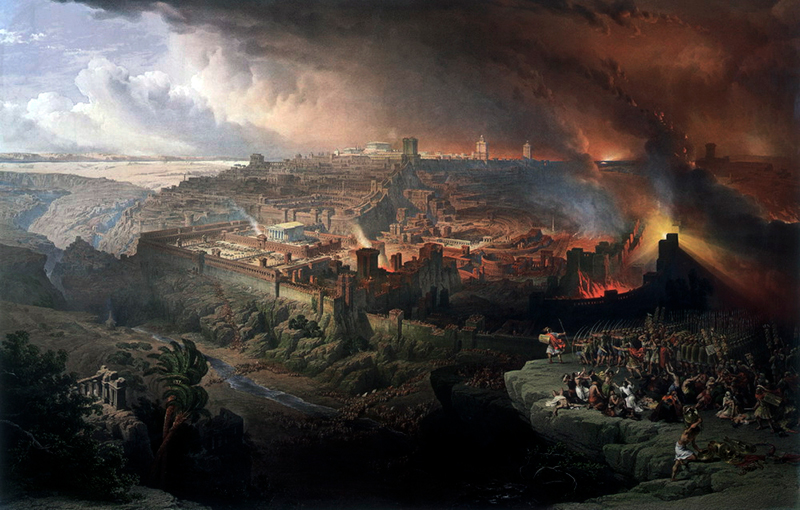 The destruction of Jerusalem in AD 70 The destruction of Jerusalem in AD 70

Map indicating progress of the Roman army during the siege
|
Titus offered peace to the inhabitants several times and was ambushed and attacked for his efforts. The succession of walls were attacked with battering rams and siege engines. The Roman army raised banks and towers. The Jews sallied out from the gates a number of times to destroy the siege weapons, and did score some limited successes. The desperate defenders repaired breaches and built new defensive lines as the legionnaires penetrated the suburbs then broke into the city proper. They razed the Temple, leaving no stone standing on another. Josephus claims there were over a million defenders, Tacitus says 600,000, with women joining the men in the barricades to fight to the death. There were many different factions among the Jews, but they all perished alike. Hundreds of thousands were killed, prisoners were crucified or enslaved, and many tortured and killed later. The multiple prophecies of this historic event were fulfilled in bloody massacre.
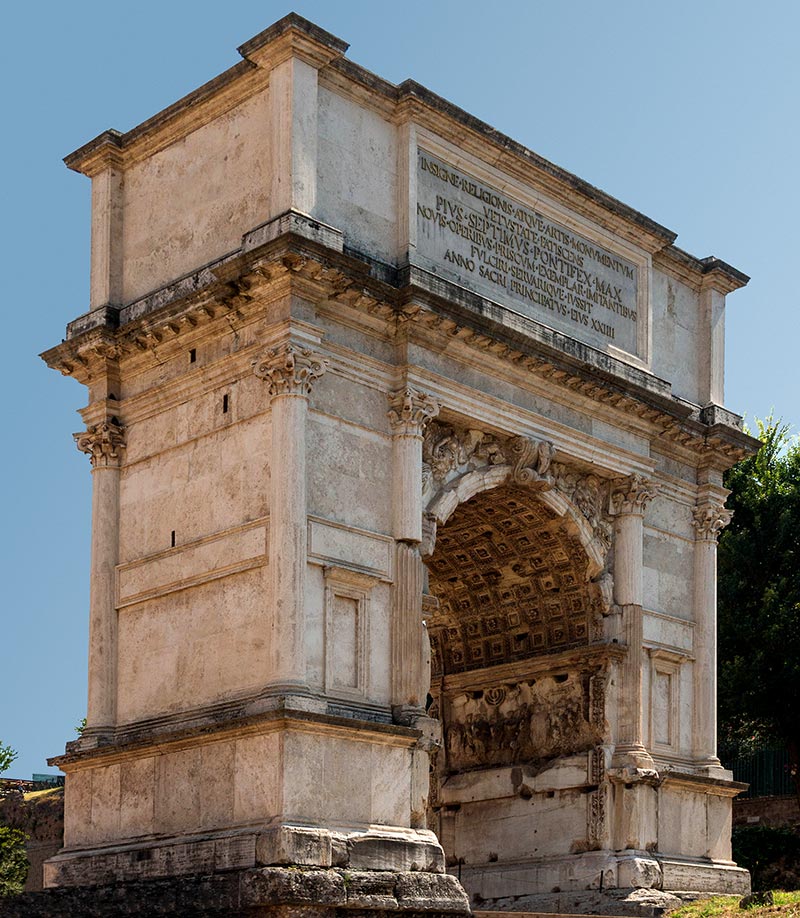
The Arch of Titus in Rome
|
The Arch of Titus in Rome can be seen today with the triumphal parade of captives and loot from the Temple carved in relief. They were marched in chains through the streets of Rome. Titus’s father Vespasian ruled the Roman Empire from AD 69-79, founding the “Flavian Dynasty.” He built the Coliseum and expanded the territory of the Empire. Titus was the first natural son to succeed his father as Roman Emperor, but served only two years before dying of a fever. Mount Vesuvius erupted, destroying Pompeii in the first year of his reign. Titus likely never knew he was the instrument of Providence to bring about the fulfillment of biblical prophecies that had forewarned the Christians of the early church, helping their survival in the time of greatest danger in Judea.
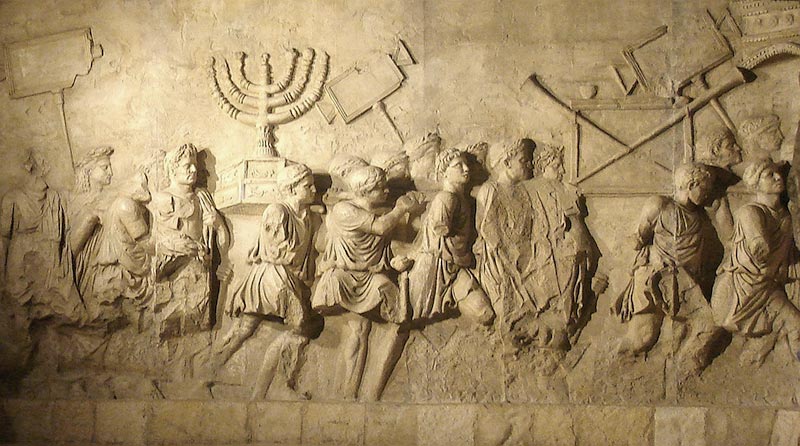 Detail of the Arch of Titus depicting the spoils of the Jerusalem Temple Detail of the Arch of Titus depicting the spoils of the Jerusalem Temple


- The Judgement and Destruction of Jerusalem, by Patton and Hofford
- The Jewish War, by Flavius Josephus

Image Credits:
1 Flavius Josephus (Wikipedia.org)
2 Titus Flavius Vespasian (Wikipedia.org)
3 Vespasian (Wikipedia.org)
4 Destruction of the Temple (Wikipedia.org)
5 Destruction of Jerusalem (Wikipedia.org)
6 Siege Map (Wikipedia.org)
7 Arch of Titus (Wikipedia.org)
8 Arch of Titus detail (Wikipedia.org)
|







